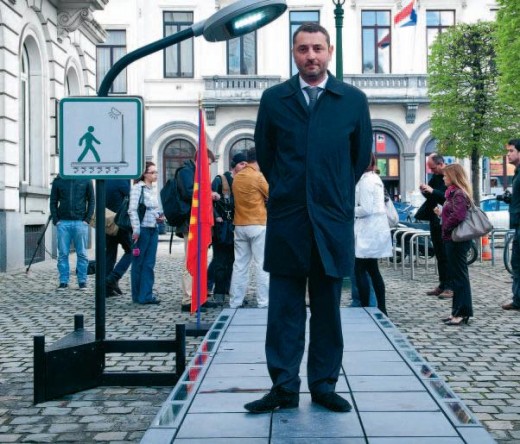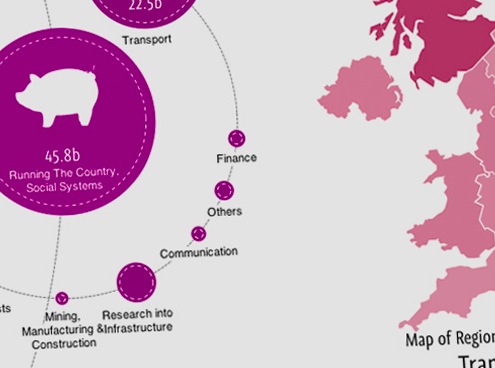
Last month we reported on how the Living Labs Global Award was looking for innovative solutions to problems in 20 cities around the world (since increased to 21). The shortlist of successful submissions has now been published and – as you’d expect – there are some interesting ideas in there.
The competition sees Living Labs Global, a non-profit association which promotes new technologies and services in cities, hunt down innovations around tourism, transport, health and open government, answering specific requests for help from cities as diverse as San Francisco, Cape Town, Glasgow and Rio de Janeiro.
Here are our picks from the shortlists to win the award on 2 May.
Pedestrian-powered street lighting – Caceres, Spain
Think about all the energy expended by pedestrians walking down the street. What if it could be harnessed to power street lighting? The Viha concept involves an electro-active slab with a lower portion that is embedded in the floor, and a mobile upper part that can produce energy.
While it won’t be able to replace power stations, this solution is design to produce enough energy for use in the immediate vicinity, thus taking strain off the power grid and reducing the power bill of the local authority. In particularly crowded areas, this would work well.
City Analytics – Barcelona, Spain
City Analytics aims to measure how people in Barcelona move around the city to help understand how businesses and public services can work better for residents.
“With ultra-low-cost city analytics technology, we are able not only to scan all types of devices around, but to infer movement trends based on the hidden data that arise from people moving around a city, mall or supermarket while carrying these devices,” the organisers say.
“We aggregate the information and make it accessible via our website or through our API to implement the collected raw data or our processed information into third-party applications like city dashboards, tourism agency dashboards or periodical surveys. Additionally, we provide the temperature and noise conditions in the surroundings where our beacons are implemented.”
Why is this useful? In 20 months of testing in Cordoba, Spain, City Analytics has collected millions of records of people’s movements, allowing them to identify the best weekly opening hours for stores, hotspots for tourists and more.
Eyestop – Fukuoka, Japan; Mexico City, Mexico and Rome, Italy
If Eyestop is a winner, bus passengers in Fukoka, Mexico City and Rome may never be bored again. Developed by MIT’s Senseable City Lab, is described as “An exploration into the next generation of smart urban furniture.” It’s a bus stop that has been partially covered with touch-sensitive e-ink and screen to deliver a wide range of information.
It aims to “enrich the city with state of the art sensing technologies, interactive services, community information and entertainment.” Passengers and passers-by will be able to post ads and community announcements to a moderated bulletin board on the bus stop. Ads can also be displayed, and the solar-powered bus shelter also collects data about the local environment for scientific use.
Citybot – Hamburg, Germany
Designed to help visitors plan a visit to Hanburg with little effort, Citybot is a mobile app for iOS and Android that replaces lengthy research and preparation with artificial intelligence which plans an itinerary based on based on their location, transportation options, the time they have, and their interests.
Say the developers: “Citybot sifts through mountains of travel content such as hours of operation, travel times, distances, available transportation methods, ratings, etc. Users don’t waste time reading about interesting sites or activities that aren’t open or are too far away for them to enjoy in the time they have.
“Our proprietary engine analyzes all this information and creates complete actionable itineraries that contain only the things that a traveler wants to do, organized in a way that is easy to follow and optimized specifically for them.”
Openspending.mobi – Sant Cugat, Spain
It can be difficult for individuals to know how their taxes have been spent in their local area. Openspending.mobi aims to change this. It will allow residents of Sant Cugat to say “I’m standing in point X – the building that was meant to be funded is not here – where is it and what’s happened to the money?”, and “How much did it cost to fix the potholes in my street?”
Citizens will also be able to see how much impact publicly funded projects and services have had. They will also be able to rate them and vote on proposed plans for public spending.
Here we’ve included just a small selection of the 109 shortlisted projects, across 21 cities. You can explore them all by following the link below.
Get the TNW newsletter
Get the most important tech news in your inbox each week.








